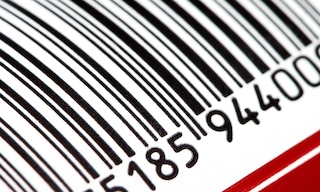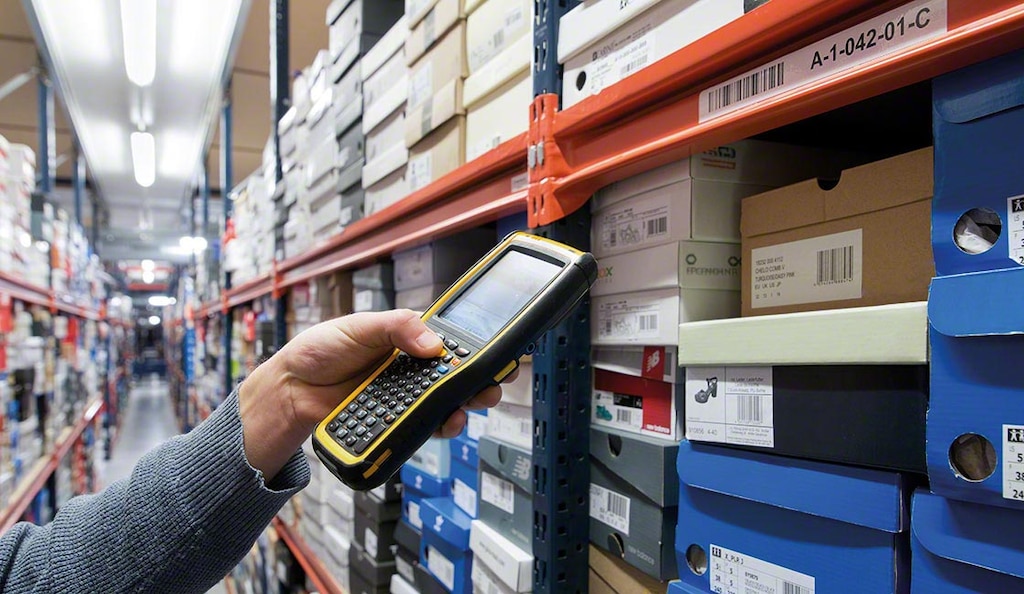
EAN-13: The international product identification code
EAN-13 and other barcode symbologies have streamlined logistics processes for all kinds of businesses worldwide by enabling quick access to product information.
What is EAN-13?
EAN-13 is a 13-digit code used to identify product units intended for retail. This type of barcode is typically displayed as vertical lines with 13 digits printed below. Although the product’s EAN is often referred to as a unique identifier, the GTIN (Global Trade Item Number) or GTIN-13 actually serves this purpose.
Unlike RFID tags, the EAN-13 symbology functions as a barcode, meaning the GTIN must be visible on the surface to be read by an RF scanner.
Where is EAN-13 used?
Created in Europe in 1979, EAN was initially employed for consumer goods and order tracking. Although these codes were originally known as the European Article Number, the system is no longer limited to the old continent. Today, it’s used in most countries worldwide, except for the US and Canada, which primarily utilize the Universal Product Code (UPC). This is an important factor to consider when labeling goods intended for international markets.
EAN-13 barcode structure
The EAN-13 code follows a 1-6-6 format. It begins with one digit, followed by six, and ends with another set of six digits.
- The GS1 prefix, formerly known as the country code, is a number ranging from 7 to 10 digits assigned by GS1 Member Organizations. It is used to generate codes that are assigned uniquely and exclusively to an entity.
- The last of the 13 digits is a check digit, which ensures that the GTIN is correct.
GTIN barcodes can be read from any angle, making them omnidirectional and significantly speeding up scanning processes in workplaces such as supermarkets.
In addition to EAN-13, there’s a shorter version known as the EAN-8. This format is typically employed for smaller items or individually packaged products (e.g., candies) to save space while still ensuring accurate identification of each unit.
How to use EAN-13
The first step to implementing EAN is to obtain a GS1 company prefix. This involves contacting a GS1 Member Organization. Each company is assigned a unique number, ranging from 7 to 10 digits, to guarantee that its codes don’t overlap with those of other businesses.
Once you have your company prefix, the next step is to encode your warehouse inventory and create a product catalog. Be sure to account for specific details, such as whether the items have fixed or variable weights. Finally, you’ll need barcode generation software and a compatible printer to produce the labels.
Calculating the EAN-13 check digit
When a product features one of these labels on its packaging, the check digit ensures that a GTIN generated using the EAN-13 format is valid. This security system allows scanners to perform reliable, error-free readings.
The check digit, which verifies whether the EAN-13 is correct, is the last number of the 13-digit code. It is derived through a calculation involving the other 12 digits. While online tools can easily compute it, these steps outline how to calculate it manually:
- Add the digits in odd positions.
- Add the digits in even positions and multiply this sum by three.
- Add the results from steps 1 and 2 and take the last digit of the total.
- If the result is zero, the check digit is also zero. Otherwise, subtract this last digit from 10 to determine the check digit.
EAN calculation example
We can verify that the GTIN code 8 410564 006257 is correct by following these steps:
- 8 + 1 + 5 + 4 + 0 + 2 = 20
- 4 + 0 + 6 + 0 + 6 + 5 = 21
- 21 x 3 = 63
- 20 + 63 = 83
- 10 - 3 = 7

Advantages of EAN-13 barcodes
Implementing GTIN codes generated with EAN-13 for identifying items in stores, warehouses, or distribution centers offers multiple benefits:
- Universality. Since EAN-13 is an internationally recognized standard, GTIN codes are valid almost worldwide. They make products identifiable across various countries and markets, except in the US and Canada, where the UPC is predominant.
- Accuracy. Leveraging RF scanners prevents errors that could occur when manually processing numerical codes.
- Inventory efficiency. Like warehouse management systems such as Easy WMS, GTINs, commonly used in small stores and supermarkets, help provide a clear view of available stock.
- Increased speed. Scanning barcodes makes checking out at the register easier and faster, improving customer service, wait times, and the shopping experience.
Ensure product traceability with Interlake Mecalux
At Interlake Mecalux, we specialize in warehouse automation and management with our Easy WMS software. This successful solution runs logistics operations in over 1,100 facilities in 36 countries, maximizing companies’ supply chain efficiency. Similarly, our Easy DOM system provides visibility into large distribution networks. Contact us to benefit from our extensive intralogistics experience, built over decades since 1966.
